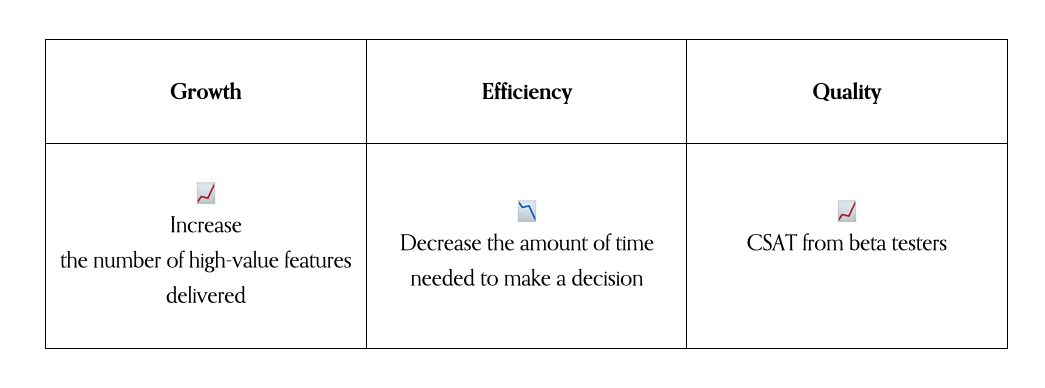How do I measure impact on my team?
When you’re implementing a new tool, process, changing the charter for your team, or aligning around a new initiative, how do you know it “works”?
And if the change is particularly brutal, like a reduction-in-force or leadership change, how can you tell if the team’s sacrifice is worth it?
Doing “change management” thoughtfully and intentionally doesn’t mean you need to spend weeks in planning or strategy meetings. If you do only do one piece of change management, pick the variables that you are trying to move.
Danger: Arbitrary change
If you don’t identify a few key variables — another term for “metrics” — any change you make to your team can feel a bit like an authoritarian parent. We’re changing because I said so! In fact….
…only 15% of executives set detailed business targets for their reorgs, and 17% of reorgs are launched at the whim of an executive or because the leadership team believes the company needs to be shaken up—reasons that typically lead to problems.
Getting Reorgs Right, Harvard Business Review
You don’t want to just “shake things up” — you don’t have time for that. You want to improve some variable, and assess whether the change has the desired effect.
The metrics you choose will drive:
Strategy - Exactly which changes you choose to make.
Shared understanding - It gets everyone on the same page.
Motivation — It drives everyone towards a shared goal.
Choosing “well-rounded metrics”
There are a ton of metrics frameworks out there — Google has their HEART metrics, and there’s DORA and SPACE. One pattern among almost all of them is generally there are three buckets:
Quality — what’s good (or less bad)?
Growth — what do you want more of?
Efficiency — what do we want less of?
Fig. Well-rounded metrics, adapted from Airops
If you’re thinking about change in terms of bottom line, impact, and happiness, that helps make sure you’ve thought through a few different dimensions — that’s a well-rounded suite of metrics.
In practice…
Say you’ve got chaos on your team: the left hand doesn’t know what the right hand is doing, you don’t have a consistent launch process, and folks aren’t clear on the top priority features for the business.
A product leader might want to introduce a twice-monthly “product review” or “business review” meeting. The variables they might choose are:
Want more examples?
I cover examples from Airbnb, Stripe, Sendgrid and other companies in my book, Surviving Change at Work which you can order from A Book Apart.
If your team is experiencing a lot of change, let’s partner up — I have a workshop that covers “just enough change management” called Rolling Out Change that’s helped teams identify their metrics, communicate change, and align teams around what’s next.



